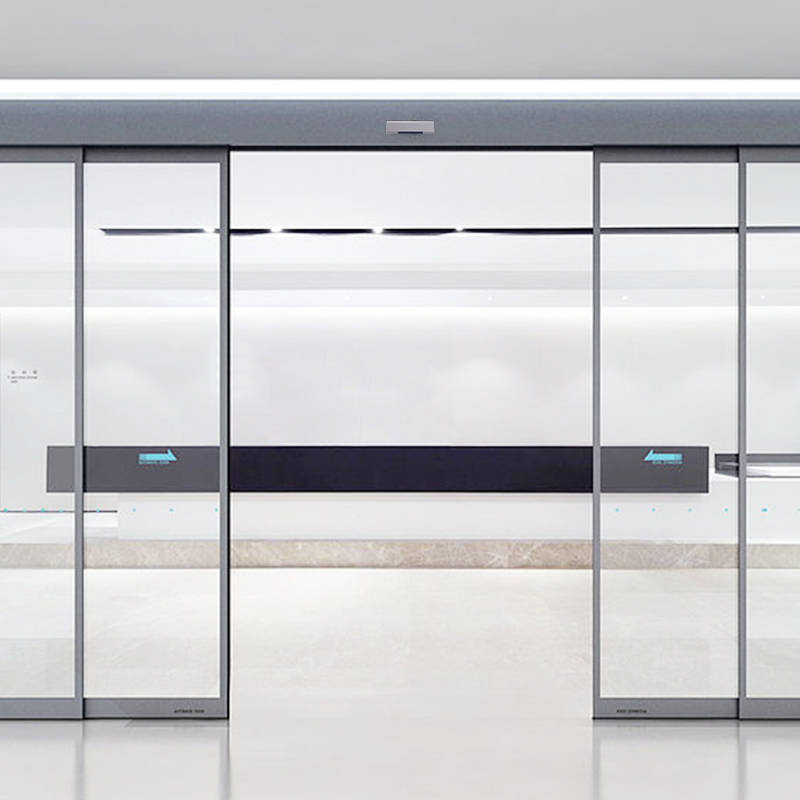In che modo i produttori affrontano la progettazione e la costruzione di sensori automatici per porte per garantire durata e longevità in ambienti ad alto traffico?
I sensori automatici delle porte sono componenti integranti degli edifici moderni, fornendo comodità, accessibilità e sicurezza per gli utenti. In ambienti ad alto traffico, come centri commerciali, aeroporti e ospedali, i sensori automatici delle porte sono sottoposti a un uso e usura costanti. I produttori devono affrontare la sfida di progettare e costruire questi sensori per resistere ai rigori del traffico pedonale pesante garantendo nel contempo durata e longevità. Questo articolo esplora come i produttori affrontano la progettazione e la costruzione di sensori automatici per porte per soddisfare le esigenze degli ambienti ad alto traffico.

1. Materiali e costruzioni robusti:
I produttori privilegiano l'uso di materiali di alta qualità e tecniche costruttive robuste per garantire la durata dei sensori automatici delle porte. Componenti come alloggiamenti, staffe di montaggio e moduli sensori sono progettati per resistere agli urti, alle vibrazioni e all'esposizione agli elementi ambientali.
2. Contenitori sigillati e resistenti alle intemperie:
I sensori automatici delle porte sono spesso installati in porte esterne esposte a condizioni climatiche variabili. I produttori progettano custodie sigillate e resistenti alle intemperie per proteggere i componenti interni da umidità, polvere e detriti, prevenendo corrosione e danni, garantendo un funzionamento affidabile in ambienti difficili.
3. Design resistente agli urti:
I sensori automatici delle porte in ambienti ad alto traffico sono suscettibili agli impatti accidentali di carrelli, bagagli o utenti di sedie a rotelle. I produttori incorporano caratteristiche resistenti agli urti come alloggiamenti rinforzati, materiali ammortizzanti e coperture protettive per proteggere i componenti del sensore dai danni.
4. Tecnologia avanzata dei sensori:
I produttori utilizzano una tecnologia avanzata dei sensori in grado di resistere all'uso continuo e mantenere la precisione in ambienti ad alto traffico. Ciò include robusti algoritmi di rilevamento del movimento, affidabili sensori di rilevamento della presenza e impostazioni di sensibilità regolabili per adattarsi a diversi livelli di traffico senza compromettere le prestazioni.
5. Test continui e garanzia della qualità:
I produttori sottopongono i sensori automatici delle porte a rigorosi protocolli di test e garanzia della qualità per garantire durata e affidabilità. Ciò include scenari simulati ad alto traffico, test di invecchiamento accelerato e test di stress ambientale per convalidare le prestazioni in condizioni reali.
6. Componenti modulari e manutentivi:
I produttori progettano sensori automatici per porte con componenti modulari e manutentivi per facilitare la manutenzione e le riparazioni in ambienti ad alto traffico. Moduli sensori, cablaggi e connettori facilmente sostituibili consentono una manutenzione rapida ed economica senza la necessità di lunghi tempi di inattività.
7. Garanzia e supporto:
I produttori forniscono garanzie complete e servizi di supporto per garantire la durata e la longevità dei sensori automatici delle porte in ambienti ad alto traffico. Garantie estese, hotline di supporto tecnico e opzioni di assistenza in loco garantiscono tranquillità ai proprietari di edifici e ai gestori delle strutture.
Conclusione:
I produttori di sensori automatici per porte utilizzano una combinazione di materiali robusti, custodie resistenti alle intemperie, caratteristiche di design resistenti agli urti, tecnologia avanzata dei sensori, test continui e servizi di supporto completi per garantire durata e longevità in ambienti ad alto traffico. Affrontando le sfide uniche poste dal traffico pedonale pesante, i produttori consentono ai sensori automatici delle porte di fornire un funzionamento affidabile ed efficiente, contribuendo ad un accesso senza soluzione di continuità e ad una migliore esperienza utente negli spazi pubblici affollati.







